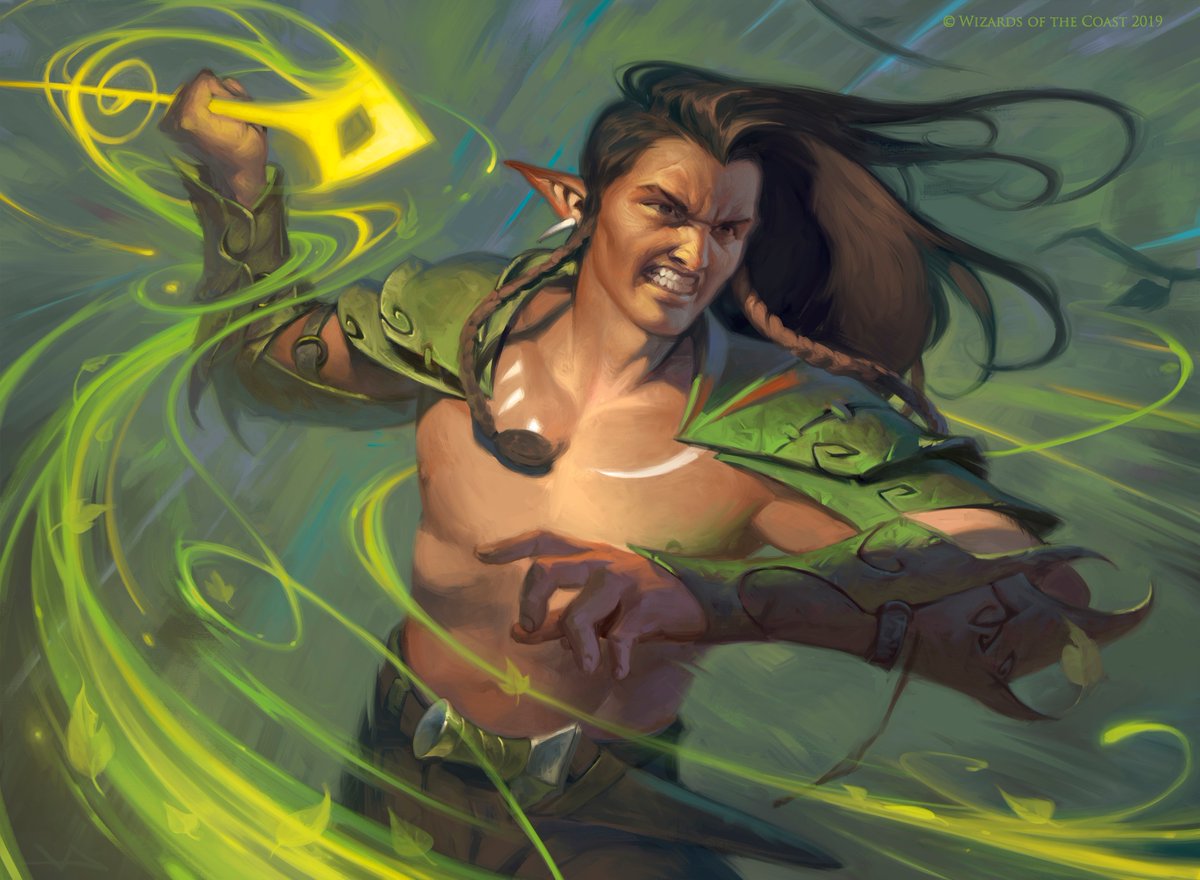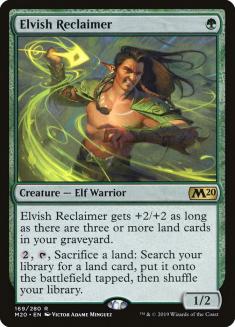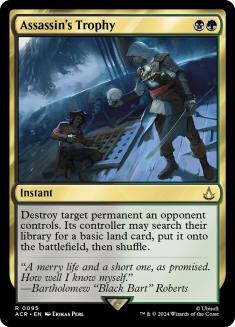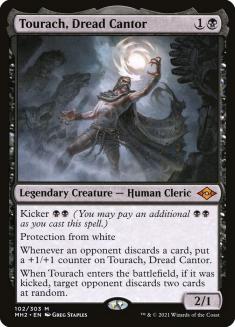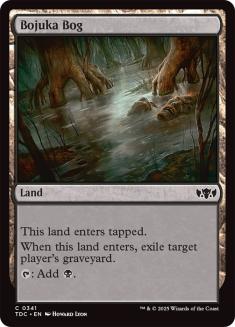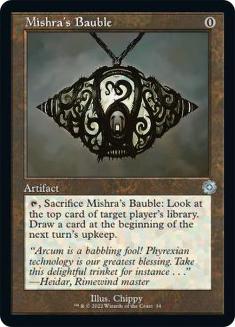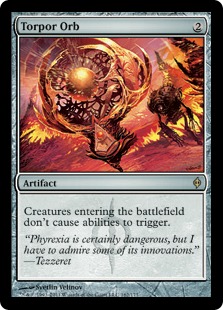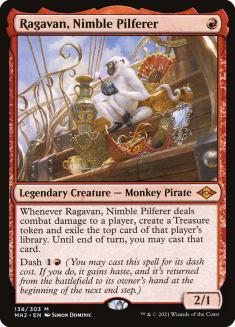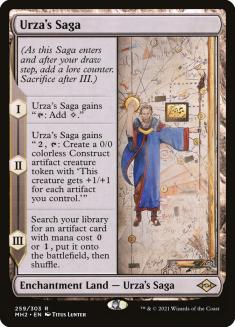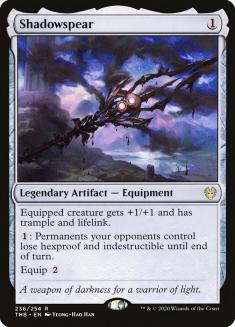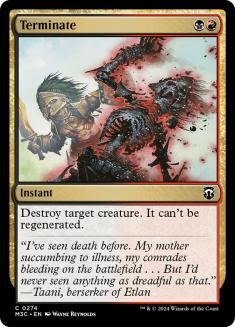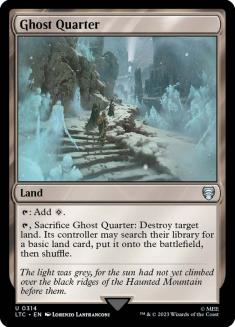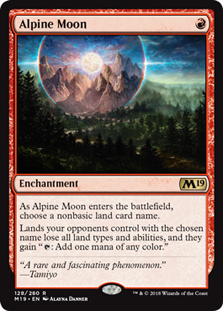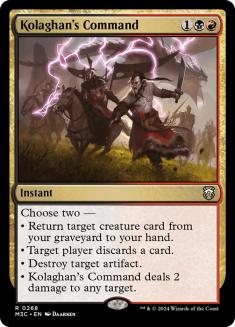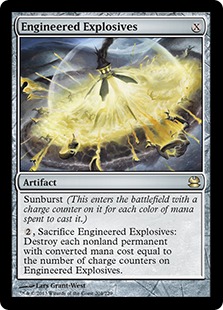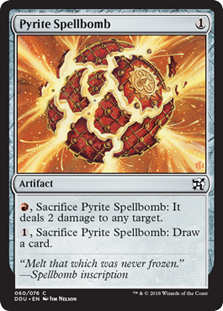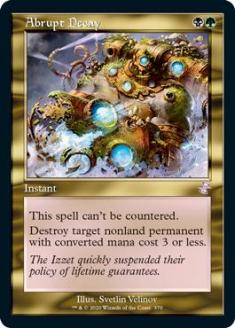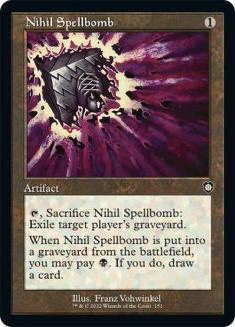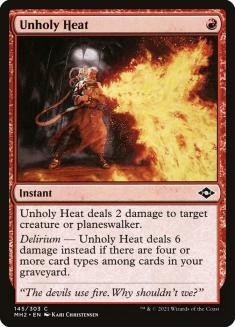How is it that Modern’s metagame is moving faster than Standard’s right now? About a month ago I wrote a fairly extensive primer on Jund Midrange (Lurrus) in Modern. I thought that’d be the end of it for a while, but Sanitoeter had other plans for me after their fifth-place finish in a Magic Online (MTGO) Challenge earlier this month.
Since then a lot of players have begun adopting this new variant, so here we are with me once again putting my “Jund Guy” hat on.
A hat I very much love putting on!
Creatures (15)
- 4 Tarmogoyf
- 4 Elvish Reclaimer
- 1 Kroxa, Titan of Death's Hunger
- 2 Tourach, Dread Cantor
- 4 Ragavan, Nimble Pilferer
Planeswalkers (4)
Lands (23)
Spells (18)

After playing a decent amount with this version, I’m still not certain if I like it more than “yesterday’s” Jund Midrange (Lurrus). I know, not the start you thought we’d be taking. While I do subscribe to Ross Meriam’s opinion on Dragon’s Rage Channeler’s current place in the metagame, it’s still one of the best threats we have at combating our worst matchup, Four-Color Blink (Yorion). Getting more “midrange” against the deck that’s all about value doesn’t seem like the thing we want to be doing.
It’ll take a while to answer which version is better to play. In all honesty, we probably shouldn’t even be rushing it, as the worst thing we could do is disregard this new variant before we even figure out how to improve upon it. That’s why we’re going to simply ignore that question altogether today and focus on this new variant that plays Elvish Reclaimer.
Reclaimer Pros and Cons
Since this tech has been out for about two weeks now, there’s already been a lot of content made about Elvish Reclaimer. Still, it’s important to quickly highlight the card’s pros and cons for all of you in the Jund clan who have been living under a rock.
Pros:
- Doesn’t die to Wrenn and Six when there are fewer than three lands in the graveyard.
- Doesn’t die to Lightning Bolt when there are three or more lands in the graveyard.
- Allows you to search up copies of Urza’s Saga.
- Can lean on the Urza’s Saga plan when Rest in Peace is on the battlefield.
- Allows you to create a toolbox-like package of lands to search up for in specific matchups.
- A much stronger topdeck in topdeck wars.
- Gives the deck more green cards to allow for Force of Vigor in the sideboard.
Cons:
- Not as aggressive.
- Adds a third color requirement for spells that need to be cast on Turn 1.
- Not having surveil leads to a slightly higher mulligan rate.
- Sometimes it is too small and too slow to impact the game.
- Causes you to put Force of Vigor in your deck when you really shouldn’t be doing that.
Matchup Impacts
Pretty much, replacing Dragon’s Rage Channeler with Elvish Reclaimer should strengthen the deck in matchups like Mono-White Hammer, Grixis Death’s Shadow (Lurrus), the mirror, and any other aggro-midrange strategy. It’s also potentially better in matchups where searching for silver-bullet lands like Ghost Quarter or Bojuka Bog is relevant. While I haven’t gotten as many games against these matchups, I feel strongly that it’s worse against Four-Color Blink (Yorion), Temur Crashcade, and Azorius Control (Kaheera).
A Note on Midrange
This brings me to a common misconception I see from non-Jund players. While the terms “Aggro” and “Control” are pretty self-explanatory, “Midrange” tends to cast a wide net. That’s why I always try to go a step further and describe midrange decks as aggressive-leaning or defensive-leaning. Jund Midrange (Lurrus) is an aggressive-leaning deck while Four-Color Blink (Yorion) is a defensive-leaning strategy.
This is important to think about, because it’s easy to look at Elvish Reclaimer and think being more midrange will always be a good thing. While it certainly will be in mirrors, and against the two most prominent strategies in Grixis Death’s Shadow (Lurrus) and Mono-White Hammer (Lurrus), it will most likely cause the deck to lose even more in its more difficult matchups like Azorius Control (Kaheera) and Four-Color Blink (Yorion).
All of this is not trying to prove one way or the other if the Elvish Reclaimer builds are better or worse. The main reason I’m bringing any of this up is that I’m keeping an open mind that both builds have merit. One could be better than the other based on local metagames, shifts in the MTGO metagame, or what-have-you. Right now Grixis Death’s Shadow (Lurrus) is extremely dominant, so I’m happy to continue exploring Elvish Reclaimer builds.
We just need to trim the fat a bit, and tune our own list.
Things I Eventually Changed While Testing
Before we even get into this section, I have to say I’m very impressed with Sanitoeter’s brewing abilities to even come to this list. I’ve always liked Elvish Reclaimer, but never even considered taking Dragon’s Rage Channeler out of the deck, even though I sideboarded it out in many matchups. That said, there are a few interesting card choices I’m not willing to continue playing with.
I asked this question on Twitter the other day as I was genuinely curious. Personally, I love that the card exists, but don’t think it’s something that should be played. The only time I did unregrettably was in Standard when I sideboarded it for matchups that had difficult-to-handle card advantage engines like Experimental Frenzy. Besides that, I’ve never been a fan. For those of you who agree with me, I don’t need to say more. That’s why this next section goes out to all of you who have been playing with Assassin’s Trophy and liking it.
The Assassin’s Trophy Dilemma
I understand wanting access to something so truly versatile that it can deal with Murktide Reagent, Chalice of the Void, and even Urza lands. In those situations it’s probably fine that an opponent is getting to search their library for extra land. The issue is sometimes Assassin’s Trophy is targeting a Ragavan, Tarmogoyf, or Death’s Shadow. In these early-game situations, the extra land may very well be the reason a game is lost.
It’s easy to see when a card like Assassin’s Trophy wins a game no other removal could, but at the same time it’s very difficult to pinpoint the games it loses you. Early econ advantages can be deadly against a deck like Jund Midrange (Lurrus), because we’re so limited to how quickly we can gain advantages. Urza’s Saga takes two turns regardless; we can only trigger Ragavan once a turn, and Wrenn and Six can only be activated once a turn. If you give our opponent a mana advantage, then they can start generating value more quickly than we may be able to keep up with.
Now if we were a deck like Storm, we could easily ignore the land we gave them with Assassin’s Trophy! Our main priority would be dealing with any permanent problem that stops us from comboing off. Jund Midrange is not that kind of deck, though. It’s trying to mitigate advantages while creating its own. It also needs to deal with threats as they’re presented. That’s when things get tricky, and make playing Assassin’s Trophy a no go for me.
The Manabase
I wrote extensively about this in my last Jund Midrange (Lurrus) article, so please reference that for a more detailed breakdown. Even though we’ve added another green card to the deck, I really see no reason for changing the manabase all that much. I’m down for changing a Blackcleave Cliffs to a Blooming Marsh, but I just don’t see why we’d lower the number of fetchlands in the deck.
Oh, and I’m not playing Nurturing Peatlands!
The Sideboard
I thought I’d like, or at the very least be interested in, cards like Boil and Force of Vigor. In practice, I wasn’t the biggest fan. I found the sideboard to not have the heavy-hitting answers needed to combat Four-Color Blink (Yorion), or enough cards in the “creature” matchups to transition into my “Lurrus Control” plans.
While playing the deck, I eventually settled on this list.
The List
Creatures (12)
Planeswalkers (4)
Lands (23)
Spells (21)

I’m still unsure about this card, especially when I have three Torpor Orbs for the Blink matchups, but it feels like there’s an arms race starting with other Lurrus midrange decks. It’s been fine for me, but certainly not necessary. If the mirror picks up though, which I don’t believe it will, we’ll probably want to add another to the 75 by replacing one of the Torpor Orbs.
I really hate this card, and would much rather invest in more copies of Nihil Spellbomb. It did come up once that I wanted to have access to it thanks to a surviving Elvish Reclaimer, but more often than not I’d find a Nihil Spellbomb and search for Urza’s Saga anyway. I’ve also naturally drawn this card enough times in my life to never want it to happen ever again.
I was so down to play just two copies of this card, but more often than not I found myself wanting one for delirium, revolt, or Tarmogoyf stats. It’s not the best card in the world, especially without Dragon’s Rage Channeler, but it still deserves some love in the deck.
I might be overreacting by still playing three copies of Torpor Orb, but there’s just really no other way to combat Four-Color Blink (Yorion). Hell, they even now play four copies of Veil of Summer in their sideboard. How in the hell are we supposed to pick them apart with hand disruption if they play that card? So yeah, I’m making space to try to win this difficult matchup, but maybe that’s wrong and I should just give up on it. I really don’t know.
Sideboarding Guide
Anyway, here’s my updated sideboard guide for this build of the deck. Like I said earlier, I’m still not sold that this is better than my previous build of the deck. It has felt better against a large percentage of the field, so you should at least give it a chance if you’re a Jund mage like I am.
VS Mono-White Hammer (Lurrus)
Out:
In:
VS Izzet Midrange
Out:
In:
VS Azorius Control
Out:
In
VS Temur Crashcade
Out:
In:
VS Boros Burn
Out:
In:
VS Four-Color Blink (Yorion)
Out:
In:
VS Jund Midrange (Lurrus)
On the Play
Out:
In:
On the Draw
Out:
In:
VS Golgari Yawgmoth
Out:
In:
VS Grixis Death’s Shadow
On the Play
Out:
In:
On the Draw
Out:
In:

